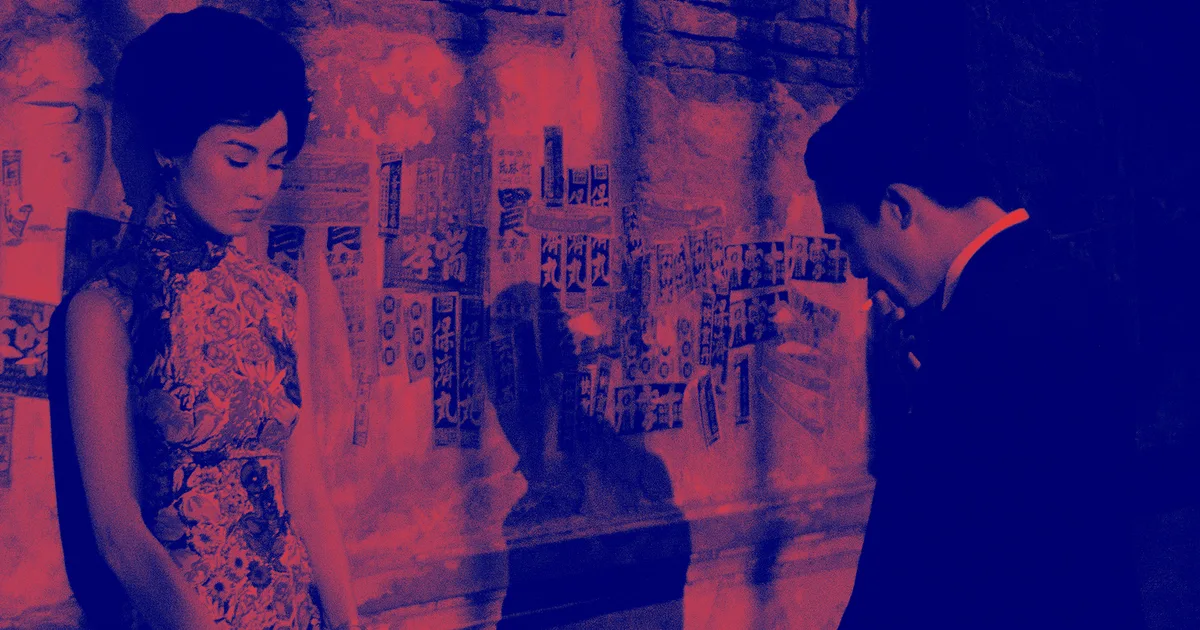
In hindsight, it is not surprising that the film’s nostalgic rendition of 1962 Hong Kong left such an indelible influence on an entire generation of cineastes. In the 2000s, Wong’s formal and narrative restraint set him apart from the increasingly grandiose cinematic ambitions of both Chinese and Hollywood studios. During this period, his peers like Ang Lee and Zhang Yimou choreographed complex fight scenes on picturesque vistas, interspersed with charged moments of intense melodrama. Wong resisted any temptations towards manufacturing maximalist spectacles. Even compared to other works in his oeuvre, In the Mood for Love is noticeably lacking in kinetic frenzies of violence or bursts of passionate intimacy. Instead, the film consists of long takes where characters, no more than one or two at a time, appear in the shot: writing, eating or sitting in plumes of cigarette smoke. In close-ups, yearning stares and brief moments of physical contact are in full focus. In the wide shot, lonesome figures walk away into the distance.
Of course, the film’s lasting legacy is more than just a mood board reference. At the turn-of-the-century, Wong’s magnum opus exists in contradiction to the promises of a new age. As the internet instantaneously connected billions of users around the globe, In the Mood for Love realized an interpersonal connection that transcended the framework of forums, chat rooms or video calls. For 25 years, generations of viewers raised in cyberspace continue to resonate with a deceptively simple narrative of a love affair that never comes to fruition. In the wake of unfettered economic globalization and the explosion of WiFi access around the world, Wong swam against the tides of digital excess. Except for a few phone calls and a telegram, signs of modern technology are absent from the film. By placing us in the past, divorced from our connections to the distractions of the present moment, Wong mines for the raw essence of a feeling.
The protagonists never get to unleash their desires on screen. In the hands of another filmmaker, Leung and Cheung would’ve likely been directed to throw themselves into each other’s arms, undressing in a steamy climax to relieve the 90 minutes of simmering sexual tension. Against all conventions and instincts, Wong instead pulls his two star-crossed lovers apart. There is no scandalous affair, just a fleeting slip into a fantasy that never truly plays out. With the film’s conclusion in mind, all the instances of controlled affection, the silent stares, the late-night writing sessions and the tame re-enactments of adultery feel even more erotic. The couple don’t end up riding off into the sunset together, but the time they shared as neighbors has left a seismic impact on their lives. Like idealized memories that stray further from the truth each passing day, each of Wong’s images revel in the saturated shadows of a nostalgic mirage.
In the Mood for Love clearly bears an important personal meaning for its director. What was probably intended as a love letter to a bygone era of Hong Kong’s history, a construction of childhood scenes where gossiping family members played Mahjong all night long, has now mutated into a mournful treatise to luxuriate in fading pasts. Whether it is a person, a place, or a memory, every frame of Wong’s masterwork allows viewers to get lost in their own sinkhole of longing. Recent box office and critical hits like the Daniels’ Everything Everywhere All at Once or Celine Song’s Past Lives are evidence that Wong’s impulse for nostalgia remains as widespread as ever. Though the former is far more direct in its homage to Wong’s film, both grapple with visions of what could’ve been. A vivid recall of fond memories and the invention of alternative futures might be our best recourse in dealing with an overstimulating, and overbearing present.
In The Mood For Love + In the Mood for Love 2001 will screen at venues across New York and London this summer.
